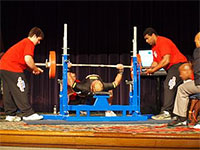


Electrical power seen in a light bulb
Mechanical power of weightlifting
Mechanical power of a FI racecar
 |
 |
 |
Electrical power seen in a light bulb |
Mechanical power of weightlifting |
Mechanical power of a FI racecar |
You may have heard the term “power” used in many different ways. For example, you may have heard it used in history when talking about the power of a country or group of people. You may have also heard the term used in math class when learning about exponents (23), and of course, you have thought of power every time you use an electrical appliance.
But what does power mean in physics? The images above represent a few of the ways you can see power in physics. In this lesson, you will learn about power in physics and how to calculate power.
![]() Take a few moments to watch this brief video. Answer the following questions in your notes.
Take a few moments to watch this brief video. Answer the following questions in your notes.
Interactive popup. Assistance may be required.
Power is work over time.
Interactive popup. Assistance may be required.
Power is the rate of using energy or doing work.
During the video, you may have discovered that power is the rate of energy transfer, or the rate at which work is done. Power is a scalar quantity, meaning it only has magnitude and does not have direction (like a vector quantity).
Now that you’ve learned what power is and the relationship power has with work and energy, you will learn how to calculate power within a closed system.
Sources for images used in this section, as they appear: